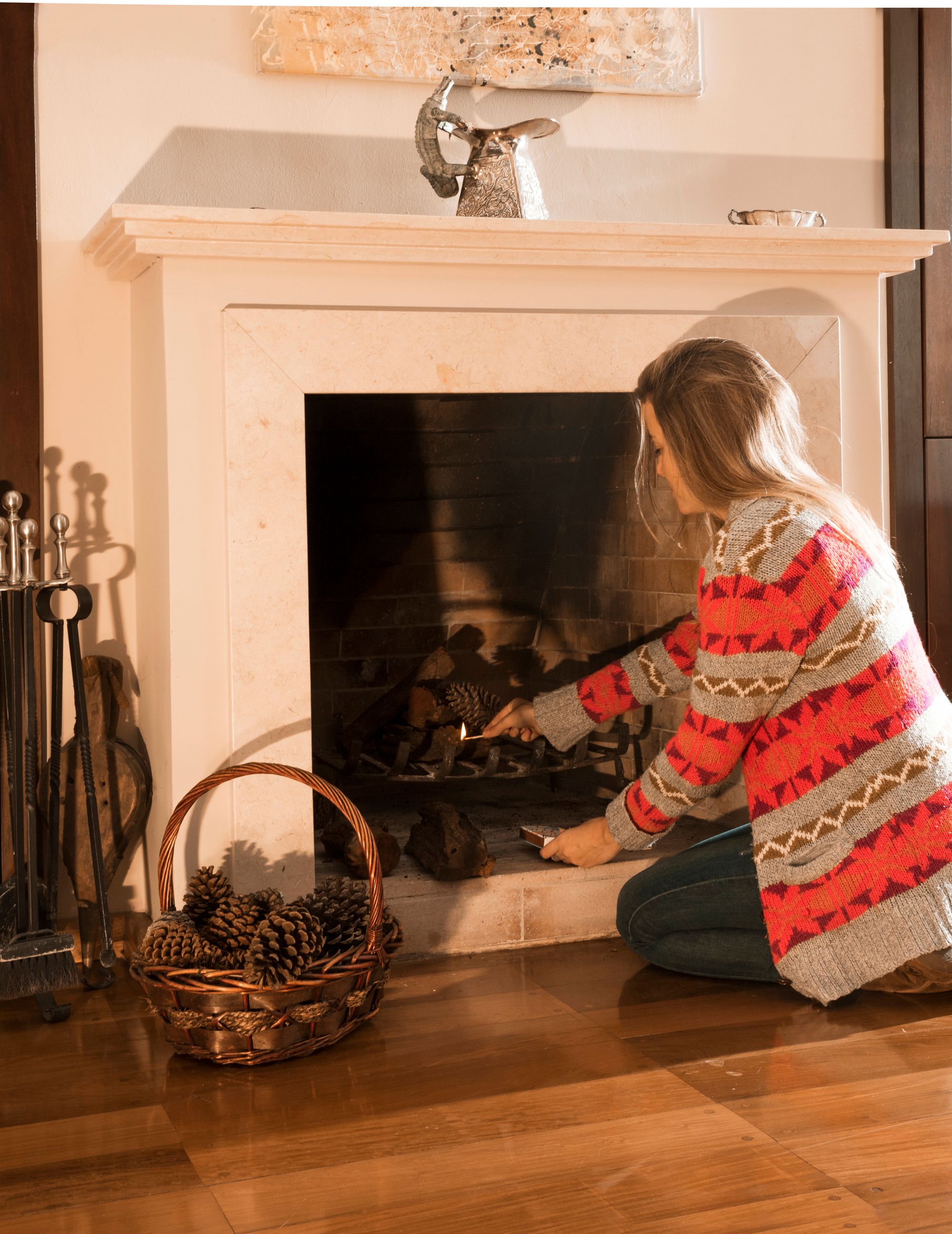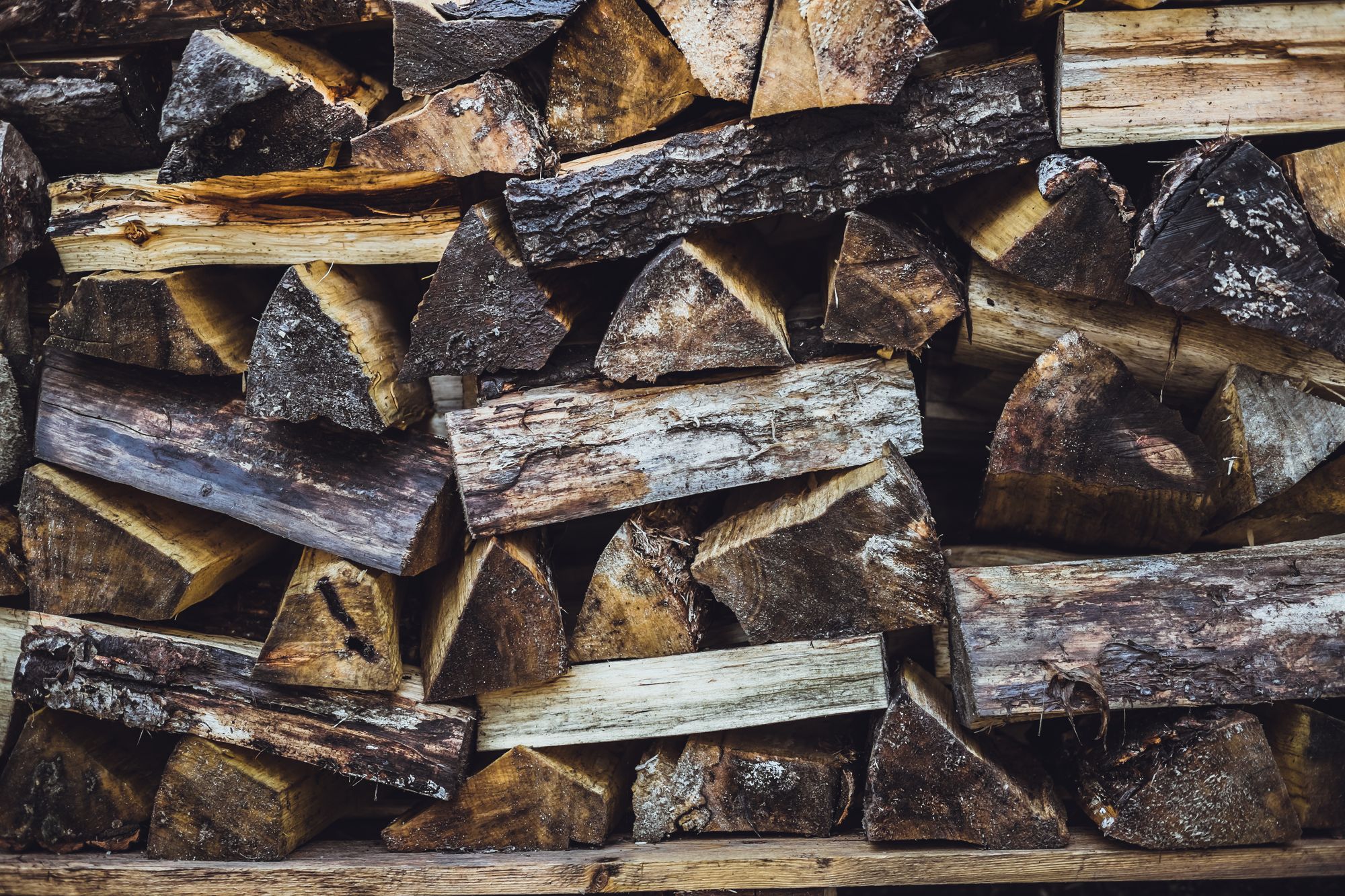With costs of nearly everything rising, you are probably looking for ways to cut costs on heating during the coming colder months. Have you ever considered heating your home with wood? There is nothing quite like the warmth, both in heat and atmosphere, provided by traditional wood burning fires. But let's say you have a gas fueled fireplace. Is there a way to cut your gas bill by converting from gas fuel to the more cost-efficient wood fuel alternative? So, let's take a look at your options and hopefully answer some questions.
First of all, can you burn wood in a gas fireplace?
In short, no.
It is possible, however, to convert some, not all, gas fireplaces into wood burning fireplaces. If your gas fireplace started out as a traditional wood burning fireplace and has an established masonry chimney that has been converted to gas, the fireplace conversion from gas back to wood won't require as much work or funding. I'll describe steps for this process in the next section. In most newer homes with gas fireplaces, however, there won't be a conventional chimney* and most gas fireplace venting systems are not designed to withstand the high temperatures emitted when burning wood. This is where things get pricier. In order for these flueless or balanced flue systems to be converted odds are a complete fireplace replacement may be in order, which isn't always an option.
*Must have a conventional chimney - Gas fireplaces without conventional fireplaces such as a balanced flue system or flueless.

How to convert a gas fireplace back to wood - How to change gas burning stove to wood burning
- Check Your Local Building Codes - Some smoke control areas/zones it is illegal to emit smoke unless using permitted fuel or appliance due to by products produced from burning wood. It's a good idea to do this at the start of your project to avoid potential added costs or environmental regulation conflicts.
- Have Your Existing Chimney Condition Inspected -
- Structure - Make sure the brick and mortar are in proper working condition
- Inspect or Install Chimney Liner - Must be sufficient for wood burning as they are made to withstand higher temperatures than some of the gas liners. Click now to find the perfect wood burning chimney liner.
- Install a Damper - Fireplace dampers are a necessary part of the wood burning chimney system. Shop our selection of Dampers!
- Crown Condition - Repair if needed, if repairs are needed we have the products for crown repair you are looking for.
- Cap - Spark arrestors are recommended (in some areas required) when burning wood. Shop Chimney Caps at NorthlineExpress!
- Have Existing Chimney Cleaned - This should be done prior to conversion but after the inspection.
- Remove Gas Logs
- Have Gas Supply Capped Off or Converted to a Gas Log Lighter - Any work with a gas line should be done by a qualified professional.
- Note Any Clearances to Combustibles - Wood burning clearances are different than those of gas fireplaces due to the higher heat output.
- Find the Perfect Wood Burning Fireplace Grate - Shop our selection of Fireplace Grates!
How much does it cost to convert a gas fireplace to a wood burning?
The cost of converting from a gas fireplace to a wood burning fireplace is completely determined by the amount of updates needed to your system. If a complete fireplace replacement project is required, your costs will be much higher than that of simply changing it back. Getting an inspection done will help determine the amount of work required for your project, thus helping you to determine the cost.
Is it worth it to convert my wood burning fireplace to gas?
This is also something that will be better determined after an inspection of your system. Once you have the cost of your conversion calculated, you can get an estimate regarding the cost of the amount of wood you could expect to burn, keeping in mind less wood will heat a larger area faster than gas flames will. Those two amounts together compared to the estimated amount saved on your gas bill can help you determine if it's worth it financially to convert to wood.
There are a couple other non-monetary things that could be taken into consideration too though. Depending on where you live wood can be a much more sustainable source of fuel. Not to mention, as pretty as a gas fireplace can be, nothing compares to the cozy feeling of sitting next to a real wood fire with that soothing crackle and pop of the dancing flames that helps create an atmosphere all its own.
For more information check out our article, Heating Efficiently with Wood

Other things to consider when you replace a gas fireplace to wood burning - See more
When accustomed to a gas fireplace there are a few things that are important considerations for homeowners when switching to burning wood. Some new issues with burning wood include:
- Creosote buildup - We offer an expansive collection of very effective creosote removers as well as products that prevent creosote buildup from occurring. For more information about creosote see our Resources & Help page.
- Maintenance - Chimney should be cleaned every year, at the very least every 2 years. We have several chimney cleaning products to help you maintain your chimney and fireplace in between cleanings.
- New safety precautions - Be aware of sparks and embers that can occasionally escape the fireplace. Fireplace doors, fireplace screens, and hearth rugs are products that can all help protect your home. Similarly spark arrestors on your chimney cap will help keep these from escaping out of the chimney, where they could potentially cause house or wildfires.
So realistically in most cases you can convert to or at least install a new wood burning fireplace, however, it largely depends on your current situation. A chimney system with an existing masonry chimney is going to be the best candidate for conversion, requiring the least number of updates. A gas fireplace that has no existing chimney is where it's going to get a little trickier, a vented system is going to need updates to accommodate burning wood and a ventless system may require a whole new install.
Check out our page, Resources & Help for more troubleshooting and essential safety information regarding burning wood.








